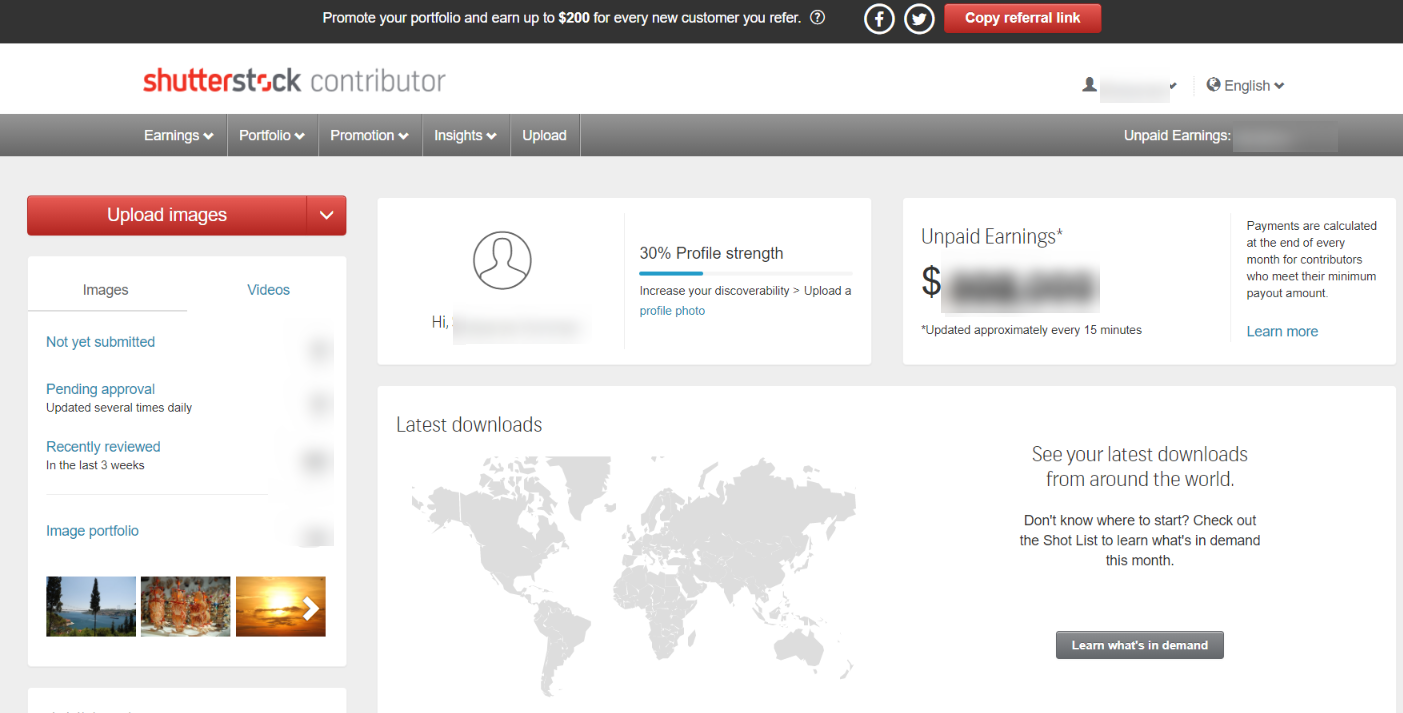Shutterstock company
They sell photos and vector illustrations over the Internet. It was founded in 2003 by Jon Oringer. They already have over 250 million images and videos available for purchase. Customers include businesses, bloggers, and individuals.
The company offers a subscription service as well as a la carte pricing for individual photos. Images can be used for both personal and commercial purposes. Licensing agreements vary depending on the use of the image.
Shutterstock is one of the leading providers of stock photography and video. The company has a library of over 250 million images and videos available for purchase. Customers can use the images for both personal and commercial purposes. Licensing agreements vary depending on the use of the image.
Images can be downloaded in a variety of formats, including high-resolution files. The company has a team of photographers and videographers who create original content for its library.
Where is Shutterstock located?
Shutterstock was established in the United States but it has offices around the world including Australia, China, India, Japan, South Korea, Russia, and Ukraine. Each office handles local business operations such as managing contributors' workflows, sales accounts, customer support inquiries, and more. Headquarter locations include New York City and Brooklyn in NY; San Francisco, CA; Seattle, WA; Cambridge, MA; London UK; Dublin, Ireland; Amsterdam, Netherlands.
How to become a Shutterstock contributor?

If you're a photographer or videographer, you can submit your content to Shutterstock for inclusion in its library. Contributors are paid royalties based on the use of their images. You can submit your photos and videos directly through the Shutterstock website.
To become a Shutterstock contributor, you must be 18 years old and submit photos and videos that are 100% royalty-free. This means they can't violate copyright laws or license agreements. If you shoot the images yourself, they should represent your own original work. And if you use other photographers' or videographers' content, you need to have obtained the proper licenses for it.
Are there any costs?
There are no start-up fees to become a Shutterstock contributor. However, contributors pay $199/year to maintain their accounts with the company, which is considered standard practice among stock photo agencies. You also pay subscription fees directly through Shutterstock unless you're a subscriber of Adobe Systems whose membership automatically accesses the company's library of images.
Is it worth it?
Shutterstock is one of the leading contributors to stock content. If you're new to selling your photos online, the company provides a great way to get started and earn money for your images.
You can enter into an "exclusive license" through Shutterstock where you agree not to sell that same image anywhere else during the contract period (minimum 3 months). Shutterstock will pay you $300 for such photos, which is reduced by 20% every quarter till the end of the year; after that, royalties will be 30%. The contributor retains 100% ownership and control over the copyright in his/her photographs and videos.
The Standard License: Available to everyone: Images available for use across multiple media (websites, print, TV commercials, and more) as either the main image or an inset. It costs $20-$100 each depending on the media type and distribution size.
The Editorial License: Available to non-commercial customers only: Images may not be used for advertising or promotional purposes. They're available for editorial use (i.e., newspapers and magazines). Under this license, images cost $12-$40 each.
Royalty-Free: Not exclusive so you can sell anywhere else: These photos are sold with a one-time payment and price determined by the contributors' terms at the time of sale. Once paid, the purchaser will have full rights to use the photo within their own commercial projects without further obligation or compensation to the photographer.
What to shoot?
When shooting for Shutterstock, you should aim to take photos or videos that are high quality and unique or uncommon. While the company has a wide variety of content in its library, it always wants photographers and videographers to submit their own original work. Shutterstock recommends that contributors download the free iStock app which is powered by the company's global community of photographers.
You can also follow Shutterstock on social media such as Facebook, Twitter, Google+, Flickr, and Instagram to stay up-to-date on photography trends and gain inspiration from other submissions to the site. If you need help, you can ask questions about selling your images by posting a topic in its Digital Photography Help Forum.
How much will you be paid?

You will receive royalties based on the use of your images. You can submit your photos and videos directly through the Shutterstock website.
The payment sum depends on several factors - license, subscription, and your earning tier. The latter is determined by your Shutterstock sales rank which is based on the total number of sales, not downloads. The more you sell, the higher your rank and the more you'll earn from future sales. Royalties start at 25% for images in the basic tier and go up to over 50% for those in the top-earning tier.
The company has 4 tiers for lifetime earnings:
Basic: 0-999 sales
Standard: 1,000-9,999 sales
Advanced: 10,000-99,999 sales
Expert: 100,000+ sales
How to receive the payment?
Shutterstock pays your earnings monthly via PayPal. You can only receive the money after you've earned at least $10 or if you're submitting photos that are exclusive to Shutterstock, then it will be paid directly by the company.
You won't be receiving any physical checks in the mail because all payments are sent electronically to your PayPal account which you also use for other online transactions. You'll receive a payment notification via email from Shutterstock notifying you about your revenue and when they have transferred it to your account.
It takes typically takes 3-5 business days to complete the transaction so don't panic if you don't see an instant deposit into your bank account right away after every payment cycle.
There are no special signup fees or upfront costs associated with selling images on Shutterstock. You only need to create an account and upload your photos and videos and then wait for them to be approved by the company's editors. If they're not, you can pick other photos or try again after modifying your submissions so that they meet their guidelines.
How to register on Shutterstock?
The registration process is fairly straightforward. All you have to do first is sign up as a contributor. After creating your account, you need to upload at least 10 of your images before you can start selling them on the website. If your content passes editorial review, then it will be visible on the site and available for download by its customers.
Account regulations
- Age requirements: You must be 18 years or older to register as a contributor on Shutterstock.
- Photo resolution: Your images must be at least 2 megapixels (MP).
- Video specifications: Minimum dimensions are 1280x720 pixels. The minimum length is 5 seconds. The maximum file size is 500MB.
- Accepted file formats: Photos - JPEG, TIFF, PNG; Videos - MP4, MOV, AVI.
- Copyright permissions: By submitting your photos and videos to Shutterstock, you're giving the company permission to license them for commercial use. You still retain full copyright ownership of your work, but you're granting Shutterstock the non-exclusive right to sell them to its customers.
What kind of photos sells well?

If there's one general rule about what type of photos are popular right now it's that more consumers want lifestyle imagery with people rather than beautiful landscapes or buildings alone nowadays. A large number of Shutterstock contributors focus on producing beautiful scenic shots from around the world but these types of photos aren't very popular because they're already widely available across other stock photo sites and photographers can easily sell them on other platforms.
Shutterstock customers tend to buy photos of people and particularly those that can convey particular emotions such as joy, humor, or sadness. It's best to include the face of at least one subject in your photo so that viewers can connect with them and feel like they're a part of the story and not just bystanders looking at a beautiful scene.
The most popular content for sale is lifestyle imagery featuring fashion, travel, food & drink, beauty & fashion, kids & family, love & romance, motherhood, pets. The list is pretty much endless as long as you have unique contents that are not readily available on stock photo websites.
Shutterstock releases
The content you upload to Shutterstock is reviewed by their editorial team and if it's approved, it's placed into one of the company's eight monthly releases. Photos and videos are released on the first of the month and remain available for purchase for the entire month. After that, they're either removed from the site or moved into the next release.
In order to get an idea about which types of photos are popular each month, you can take a look at Shutterstock's most recent releases. This will give you a good idea about what kind of content customers are looking for and what might be popular to submit in the future.
- nudity - While Shutterstock does accept photos and videos containing nudity, they must be tasteful and fall within the company's editorial guidelines. That being said, the majority of customers are not interested in purchasing explicit content and it's usually a lot harder to sell these types of images.
- 3D interiors - Shutterstock customers are always looking for new and interesting photos to use in their marketing materials and that includes 3D interior shots. These types of images are becoming more popular as businesses try to create a more immersive online experience for their customers.
- artwork - While many contributors may feel that photos of artwork are beautiful, they're not very popular with customers because the images don't convey much information. Regardless of how beautiful you think your art shots are, there's really no need to upload them to Shutterstock if that's what your main focus is.
Final words
Photos and videos that are well-executed and tell a story always do well on Shutterstock. It's important to keep in mind what kind of photos are popular right now and try to produce content that is unique and not readily available on other stock photo websites. Take a look at Shutterstock's most recent releases to get an idea about what kind of photos customers are interested in buying.
Remember that nudity must be tasteful and fall within the company's editorial guidelines. Lastly, 3D interior shots are always popular with Shutterstock customers. So if you're able to produce high-quality images in this genre, your chances of selling them are much higher.